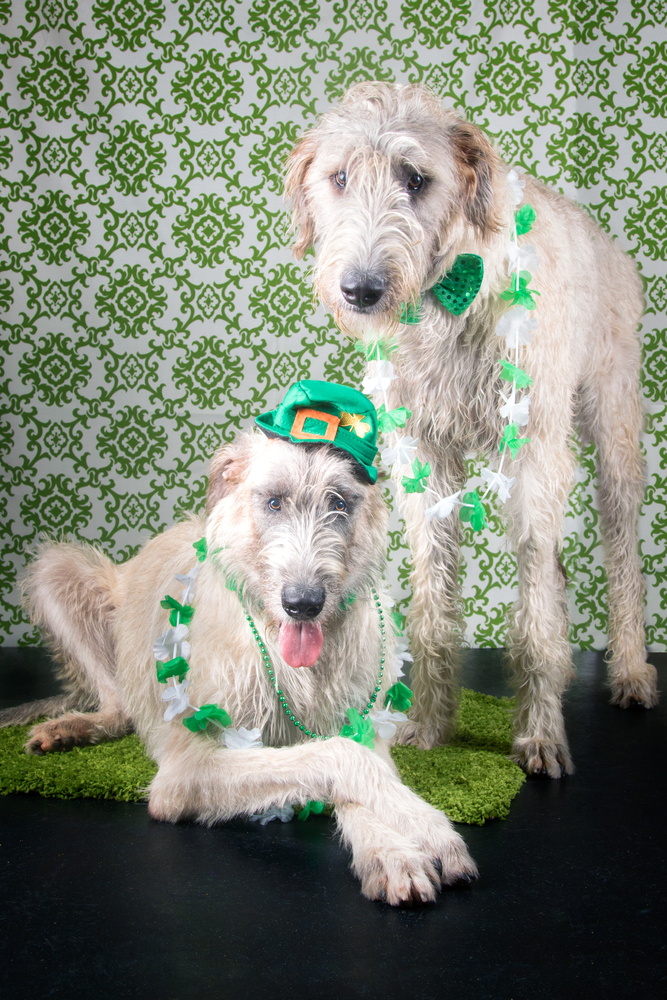March 17, 2019, will soon be upon us. This is the day of St Patrick’s Day, a celebration of the Saint that brought Christianity to Ireland. It gained popularity for many reasons, however, giving revellers a 1-day reprieve from lent certainly has helped!
Why am I talking about Saint Patrick’s Day? I’m not really. I am, however, talking about the many breeds of dogs that I see that have originated in Ireland. For example, the Wheaton Terrier, Kerry Blue, Irish setter are just a few examples. Ireland does not have a national dog, but if it did, and I risk criticism here, it would have to be the Irish Wolfhound.
The Irish Wolfhound is an ancient breed, arriving in Ireland as early as 7000 BC. It was initially used as a war hound, fighting battles alongside warriors. Its name is derived from its purpose as a wolf hunting dog. As fierce as a war hound and wolf hunting dog must sound, today’s wolfhound is far from the tough dog its name and history imply.
The Wolfhound is one of the tallest breeds (30-34 inches), on average taller than even Great Danes, and tend to be more slight/lean (100-140lbs). They are considered a sighthound, based on its ability to visualize its landscape and perceive unlike scent hounds for example (such as Beagles). The Irish Wolfhounds that I see tend to be easygoing, introverted, intelligent thinkers that are generally quiet. They really can be quite gentle giants.
Unfortunately, this is a breed that does not have a long life expectancy. The average lifespan is only seven years. Dilated cardiomyopathy aka heart disease and osteosarcoma aka bone cancer are the leading causes of death. Also, like most deep-chested dogs, gastric torsion (bloat) is a common health issue.
If you are looking for a large, purebred dog, and have done your homework to ensure that they are the right fit for your family and lifestyle, consider an Irish Wolfhound. They truly are wonderful dogs.
Written by: Rob Doucette, DVM




